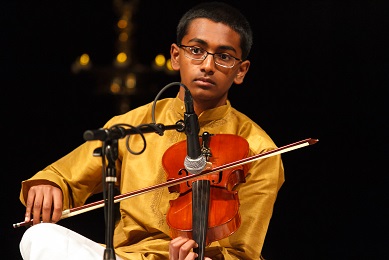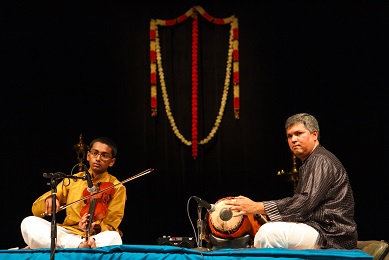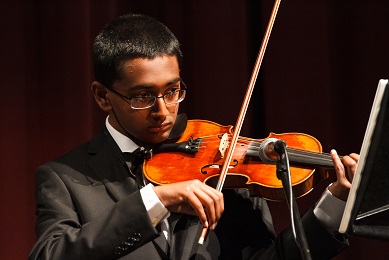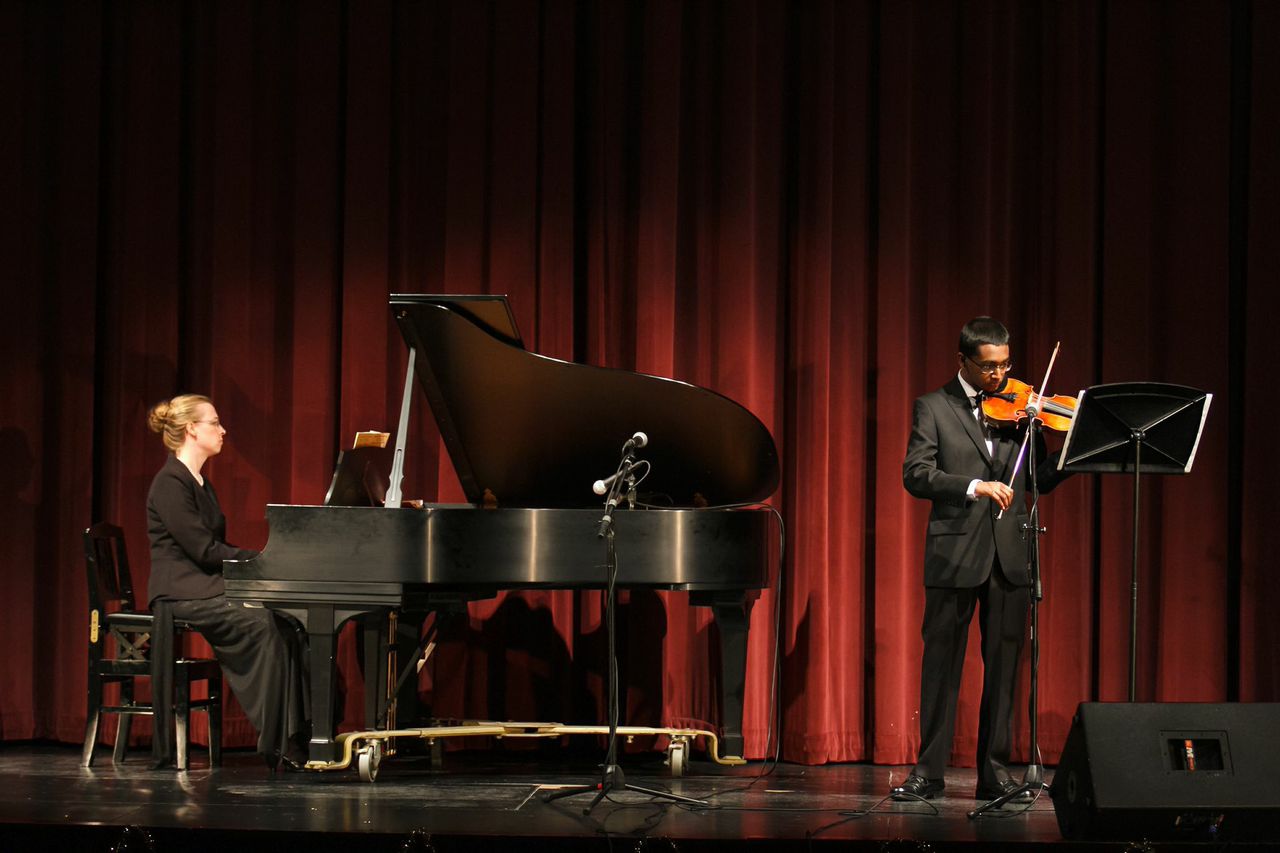Contribute
| Ruthrajeevi Govindaraj: Harmony Of The East And West |
Yazhini Ramesh
09/23/2014
The true sound of music is not something that can easily be achieved, even by a musician. The term “music†itself can easily be misinterpreted. Many people are inclined to believe that one who plays an instrument can always be called a musician. However, music requires an important component that extends beyond the notes and the rhythms, and that is the musicality within the music. Now, as a violinist myself, I can say that musicality is not something that is easily brought out within a piece of music. Many musicians tend to disregard this aspect of music, while others fail to recognize it. However, according to me, musicality provides purpose to the music. Throughout my own musical career, my teachers have always taught me to tell a story through my music, as essentially, the audience will only be listening for my story rather than my technical tricks. Fortunately, I was lucky enough to have had the opportunity to listen to well-told musical stories at a violin solo concert by a young violinist two weeks ago.
On August 23rd, 2014, Ruthrajeevi Venkat Govindaraj showed off his wide range of violin skills and abilities at his solo concert that was held at the Nashua High School North auditorium in Nashua NH. He performed a variety of violin concertos written by the world’s best composers during the first half of his concert, before he touched upon traditional classics with his Indian violin in the second half. While being accompanied by renowned musicians Angela Olszta on the piano and Gaurish Chandrashekhar on the mridangam, Ruthra fully captured the audience under his wing through the essence of his elegant music and his prominent presence.
During his Western violin portion of his concert, he first began by playing one of W. A. Mozart’s best works, Violin Concerto No.3 in G Major. Having played this song myself, it is a technically challenging piece with many complex portions and an intricate cadenza. However, by carefully maintaining his bow control, Ruthra managed to pull this piece off while fully showcasing his techniques and abilities. Afterwards, he continued his concert with the beautiful, everlasting work, Meditation from Thais by J. Massenet, which is one of my personal favorite pieces. In this piece, his sound continued to ring throughout the hall, and left an impactful impression on the members of the audience. The audience was in for a delightful treat for the next piece when Ruthra’s little sister, Anjana, joined him on stage for a duet, Concerto for Two Violins in D Minor by the ingenious J. S. Bach. From previous experience of playing this piece with many friends, I am aware that it has always been extremely difficult to bring out the conversation between both of the parts and take the audience on an enjoyable musical ride. However, Ruthra and Anjana engaged the audience into their conversation and enabled them to read their dialogues through their musicality, which certainly was commendable. After this work, Ruthra went on to play his central piece, Summer from the Four Seasons by A. Vivaldi. Through this piece, he attempted to portray and imitate the different sounds of nature, including those of birds, thunder and more. In this work, his musicality was prominent. He gracefully carried his listeners along on a musical journey through the summer as he recited a well-formulated story to his audience.
After a brief intermission where we were served appetizing samosas, Ruthra began his Indian violin portion of the concert. Although I do not play Indian violin, due to knowledge of Carnatic music, I, along with the rest of the listeners, found this portion of the concert more straightforward to follow along to. The setting on the stage completely transformed as Ruthra sat on the floor with his mridangist in a traditional Indian setup. Over the years of listening to both Western and Indian violin, I have noticed that the Indian violin has a more muffled yet velvety sound to it while Western violin has a more clear cut yet very simple sound. I have to say that even though I have been learning Western violin for so many years, the sound of Indian violin is eternal and sometimes truly takes you into another world. It is so complex yet so simple, and Ruthra did a highly decent job of showcasing its beauty throughout the second half of his concert. He began this portion of his concert with the melodious “Vathapi Ganapathim†by M. Dikshithar, which is a classic piece that almost all Carnatic singers and instrumentalists know and love. Through his violin, Ruthra allowed the harmonious ragam of Hamsadhvani to resonate within the ears of the audience, which filled the room with bright, elegant lightness. Next, he played the complex work, “Endaro Mahanubhavulu†that was composed by the mastermind Thyragaraja in the ragam Shree, before he continued with the composer’s other songs, including Anuragamuleni in the ragam Saraswathi and the song “Rama Ramana Raa Raa†in the ragam Sankarabharanam. All these three pieces were longer works which soundly showcased all of Ruthra’s talents on the Indian violin.
Overall, Ruthra was highly successful in completing his first debut concert. Aside from his well-executed recital (both Indian and Western), the enormous amount of teamwork that went into this event was just as commendable. Much of the credit behind this concert goes to Ruthra’s sincere teachers, Ms. Mary Lidman, Ms. Vidya Raman and Mr. Vittal Ramamurthy, all of whom are experts in their respective fields of music. They kindly passed down their expertise to their disciple for the success of this memorable concert, and the effect of their teachings clearly came through in Ruthra’s performance. In addition, much credit also goes to Ruthra’s entire family, especially to his mother, Poongothai Aunty, his father, Govind Uncle, his little sister, Anjana, and last but not least, to Ruthra himself. The organization of the event, as well as the quality of the performances, evidently showed the actual amount of hard work that the family put into preparing for the recital. As a result, the success of this event was greatly rewarding to Ruthra’s family and marked a huge stepping stone in Ruthra’s own violin career.
You may also access this article through our web-site http://www.lokvani.com/



